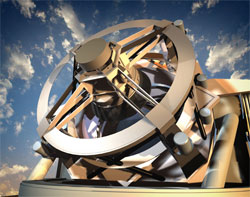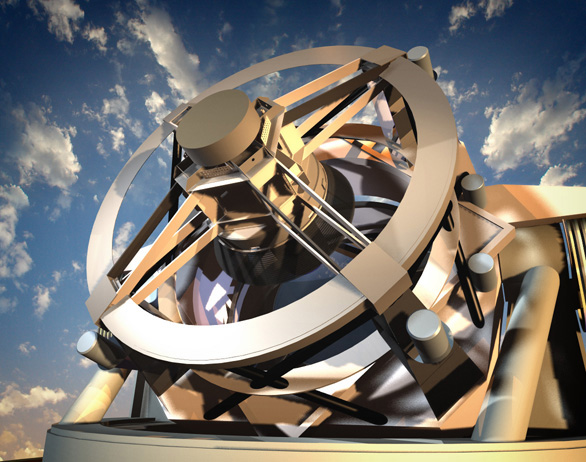So Close, yet So Far
Observations of cosmic microwaves from 380,000 years after the big bang have been essential to modern cosmology, but cosmic neutrinos should carry information on the state of the universe when it was less than a second old. In the 23 October Physical Review Letters, a team points out a curious and hitherto ignored fact about these relic neutrinos: because of their masses, they travel more slowly than light does and actually originate from a much nearer region of the universe than the cosmic microwaves. Although detecting cosmic neutrinos is still a long way off (if it’s possible at all), the work clarifies the type of information that, in theory at least, could be gleaned from relic neutrinos.
Just after the big bang, the universe was a hot, seething soup of elementary particles constantly interacting with one another. As the universe expanded and cooled, some particles could propagate freely for long distances without interacting. Neutrinos only experience the weak force, so they broke free of interactions early, less than a second after the big bang, and have been traveling freely ever since. (As you read this article, trillions of them are streaming through your computer screen.)
The cosmic microwave background (CMB) is made of photons, particles that stopped interacting much later, when protons and electrons first combined to form neutral atoms, when the universe was 380,000 years old. That time works out to a distance from earth of over 40 billion light-years, accounting for the universe’s expansion. Because the cosmic neutrinos “decoupled” much earlier, conventional wisdom has always held that they should originate from even further reaches of the universe than the CMB.
But photons are massless, whereas neutrinos have a tiny amount of mass, which makes them travel more slowly than light. In a question and answer session at a 2009 summer school, Mika Vesterinen, a graduate student in particle physics at the University of Manchester in England, asked Scott Dodelson, of the Fermi National Accelerator Lab in Illinois, how the mass of neutrinos would affect the distance the relic neutrinos had traveled since they last interacted. So Dodelson and Vesterinen set out to calculate the answer.
What they found surprised them: even though the relic neutrinos have been traveling for far longer than the CMB, their slower speed means they’ve covered much less distance. The cosmic neutrino background (CNB) originates from a distance of about a billion to ten billion light years away, much less than the 40-billion light-years for the CMB. If this seems hard to picture, remember that the “particle soup” of the early universe was everywhere, and the relic neutrinos that reach us today simply come from different locations in that universe than the faster-moving CMB photons. Dodelson calls the simple calculation something that “should have been in textbooks long ago,” but nobody thought to sit down and work it out.
The calculation reveals that the relic neutrinos originate from a range of distances where astronomical surveys are providing a wealth of information. The Sloan Digital Sky Survey is making detailed observations of the galaxies and galaxy clusters that inhabit these regions, and the upcoming Dark Energy Survey and Large Synoptic Survey Telescope, will add much more data. If experimentalists ever manage to precisely measure the CNB, it could allow cosmologists to connect the dots between the very early “seeds” of these regions–as imprinted in the CNB–and the galaxies and galaxy clusters that later formed. Such a comparison would give insights into many properties of the early universe, such as its dark matter and dark energy content.
Sean Carroll, a cosmologist at the California Institute of Technology in Pasadena, thinks this simple result is significant. “The ingenuity of physicists is endless–given enough time, I’d bet money we do start detecting the neutrino background, and this result will be the first one people think of,” he says.
–Michelangelo D'Agostino
Michelangelo D’Agostino is a physicist and freelance science writer in Berkeley, California.
More Information
A December Comment by these authors acknowledges similar work that they became aware of later: Phys. Rev. Lett. 103, 249901 (2009)





